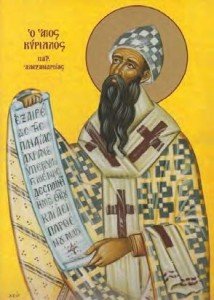Can it be said that the Council of Chalcedon solved the Christological problem? Certainly not. Like all balanced, conceptual formulas, it solved certain problems but created new ones. Actually, the fathers of Chalcedon were conscious of the limited character of all doctrinal definitions, including their own. Not only did they deny any novelty on their part and insist that their only intention was to follow the fathers and the prophets; they also formally declared their inability to exhaust the meaning of the mystery in a verbal form. This is the significance of the famous four negative adverbs included in the definition: “without confusion, without change, without division, without separation”.
In spite of this declared humility of the Chalcedonian fathers, objections to their terminology were voiced immediately. Indeed, on the one hand, by declaring that Christ was to be seen “in two natures,” they were using the word “nature” in a more abstract sense than Cyril did, for whom “nature” designated a concrete reality and was synonymous with hypostasis. On the other hand, by designating the union as “a concurrence” into one person, or hypostasis, they were not making it quite plain that this hypostasis was the preexisting hypostasis of the Son of God (although their Cyrillian expressions hinted in that direction). Finally, Chalcedonian theologians would always be at pains to try to explain how, according to the Cappadocian fathers, God was still one God, although in him there were three hypostases and one nature, whereas, according to Chalcedon, Christ was one hypostasis but in two natures.
These terminological problems clearly show that it is wrong to consider Chalcedon a kind of ultimate finale of the Christological debates. Not only was it widely opposed by large Eastern Christian communities, which still exist today and are labeled (perhaps inaccurately) Monophysties (Copts, Armenians, Ethiopians, Syrian Jacobites); but the conceptual and formal terminology used in the definition could not pretend to fulfill any function other than that of a warning or a signpost. In the experience of a deified humanity, proclaimed by Athanasius and Cyril, the authentic, created, human nature and its properties do not disappear but, in a new communion with the divine, are fulfilling their real purpose, given to them at creation.
We must always remember that with Christ we are dealing with a mystery.

